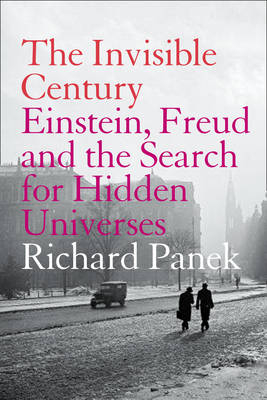
The Invisible Century
Einstein, Freud and the Search for Hidden Universes
Seiten
2005
HarperPerennial (Verlag)
978-1-84115-278-3 (ISBN)
HarperPerennial (Verlag)
978-1-84115-278-3 (ISBN)
A book which offers fresh perspectives on the scientific developments of the past hundred years through the complementary work of two of the century’s greatest thinkers, Einstein and Freud.
At the turn of the century there was a widespread assumption in scientific circles that the pursuit of knowledge was nearing its end and that all available evidence had been exhausted. However, by 1916 both Einstein and Freud had exploded the myth by leading exploration into the science of the invisible and the unconscious. These men were more than just contemporaries – their separate pursuits were in fact complementary. Freud’s science of psychoanalysis found its cosmological counterpart in the Astronomy of Invisible Light pioneered by Einstein. Together they questioned the little inconsistencies of Newton’s ordered cosmos to reveal a different reality, a natural order that was anything but ordered, a cosmos that was volatile and vast – an organism alive in time. These men inspired a fundamental shift in the history of human thought. They began a revolution that is still in progress and provided one of the past century’s greatest contributions to the history of science.
At the turn of the century there was a widespread assumption in scientific circles that the pursuit of knowledge was nearing its end and that all available evidence had been exhausted. However, by 1916 both Einstein and Freud had exploded the myth by leading exploration into the science of the invisible and the unconscious. These men were more than just contemporaries – their separate pursuits were in fact complementary. Freud’s science of psychoanalysis found its cosmological counterpart in the Astronomy of Invisible Light pioneered by Einstein. Together they questioned the little inconsistencies of Newton’s ordered cosmos to reveal a different reality, a natural order that was anything but ordered, a cosmos that was volatile and vast – an organism alive in time. These men inspired a fundamental shift in the history of human thought. They began a revolution that is still in progress and provided one of the past century’s greatest contributions to the history of science.
Richard Panek has written for The New York Times Magazine, Outside, Esquire and the Chicago Tribune, and is a contributing writer at Elle and Mirabella. He is the winner of a PEN award for short fiction (which has been broadcast on National Public Radio). He is also the author of Waterloo Diamonds, a social history of an Iowa community told through its baseball fortunes.
| Erscheint lt. Verlag | 19.12.2005 |
|---|---|
| Verlagsort | London |
| Sprache | englisch |
| Maße | 129 x 198 mm |
| Gewicht | 189 g |
| Themenwelt | Sachbuch/Ratgeber ► Natur / Technik |
| Naturwissenschaften | |
| ISBN-10 | 1-84115-278-1 / 1841152781 |
| ISBN-13 | 978-1-84115-278-3 / 9781841152783 |
| Zustand | Neuware |
| Haben Sie eine Frage zum Produkt? |
Mehr entdecken
aus dem Bereich
aus dem Bereich
eine neue Sicht auf unsere Emotionen
Buch | Hardcover (2023)
Rowohlt Taschenbuch (Verlag)
CHF 39,20
was die Physik über die Welt und das Leben verrät
Buch | Hardcover (2023)
Siedler (Verlag)
CHF 36,40


